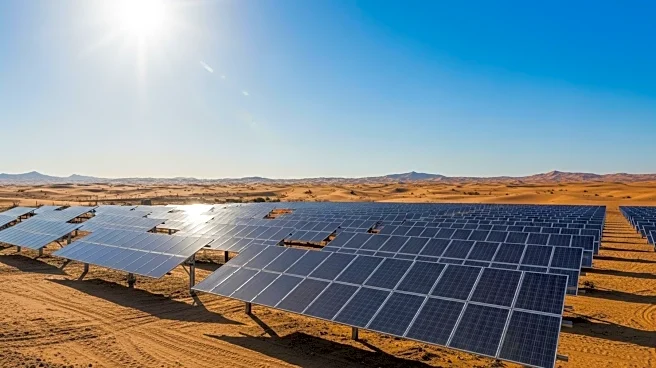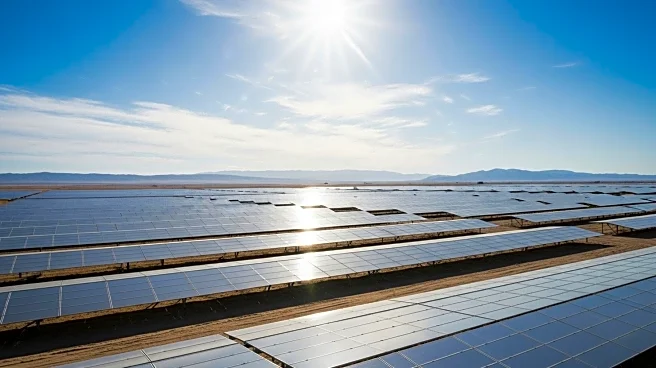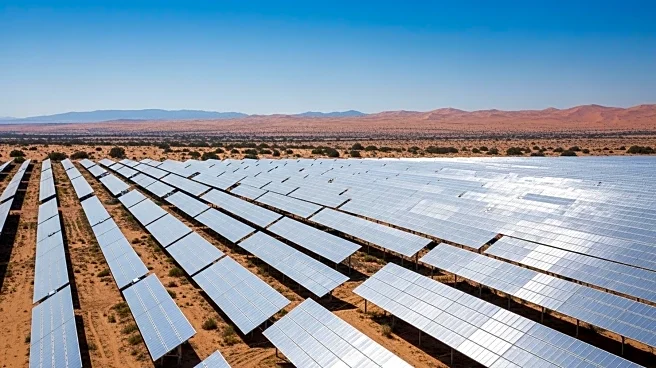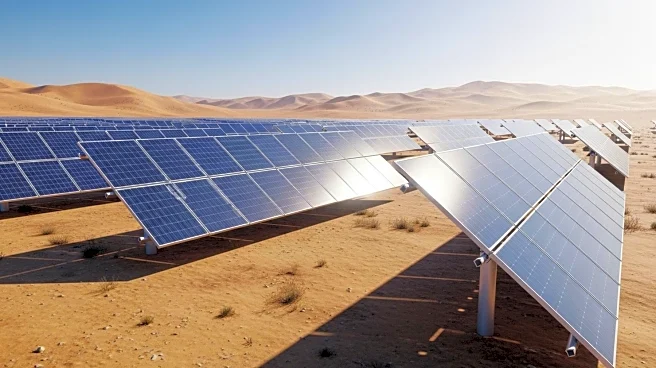What is the story about?
What's Happening?
China's desert solar parks are contributing to ecological shifts by providing shade that cools the soil, reduces wind, and increases moisture, fostering plant and microbial growth. In Qinghai's Gonghe Photovoltaic Park, studies have shown improved vegetation cover and soil health within the solar arrays compared to surrounding areas. This phenomenon is attributed to the panels' ability to moderate temperature and humidity, creating conditions conducive to ecological resilience. The International Renewable Energy Agency highlights the importance of site design, including module height and row spacing, to optimize these benefits. While not a complete restoration project, the solar parks demonstrate potential for ecological recovery in degraded desert landscapes.
Why It's Important?
The development of solar parks in China's deserts represents a significant advancement in renewable energy with ecological benefits. By improving soil moisture and stabilizing plant communities, these projects offer a model for sustainable land management in arid regions. This approach aligns with the Intergovernmental Panel on Climate Change's view that renewable energy can provide land and water co-benefits when managed carefully. The ecological improvements observed in these solar parks could inspire similar initiatives globally, promoting biodiversity and resilience in fragile ecosystems. The success of these projects underscores the potential for renewable energy to contribute to environmental sustainability beyond power generation.
What's Next?
Continued monitoring and adaptive management are crucial to understanding the long-term impacts of solar parks on desert ecosystems. Scientists emphasize the need for ongoing research to assess changes in vegetation, soil health, and biodiversity as installations age. The United Nations Environment Programme advocates for transparent reporting of ecological outcomes alongside energy production metrics. Future developments may include refining site designs to enhance ecological benefits, such as adjusting row geometry to prevent wind scour and creating wildlife corridors. These efforts will ensure that solar parks remain effective in promoting ecological resilience while generating clean energy.
Beyond the Headlines
The integration of ecological considerations into solar park design highlights a shift towards more holistic approaches to renewable energy development. This trend reflects growing awareness of the interconnectedness of energy production and environmental stewardship. By prioritizing ecological health, these projects contribute to broader sustainability goals, including climate change mitigation and biodiversity conservation. The success of China's solar parks may encourage other countries to adopt similar strategies, fostering global collaboration in addressing environmental challenges. This development represents a promising step towards achieving sustainable energy solutions that benefit both people and the planet.
AI Generated Content
Do you find this article useful?














